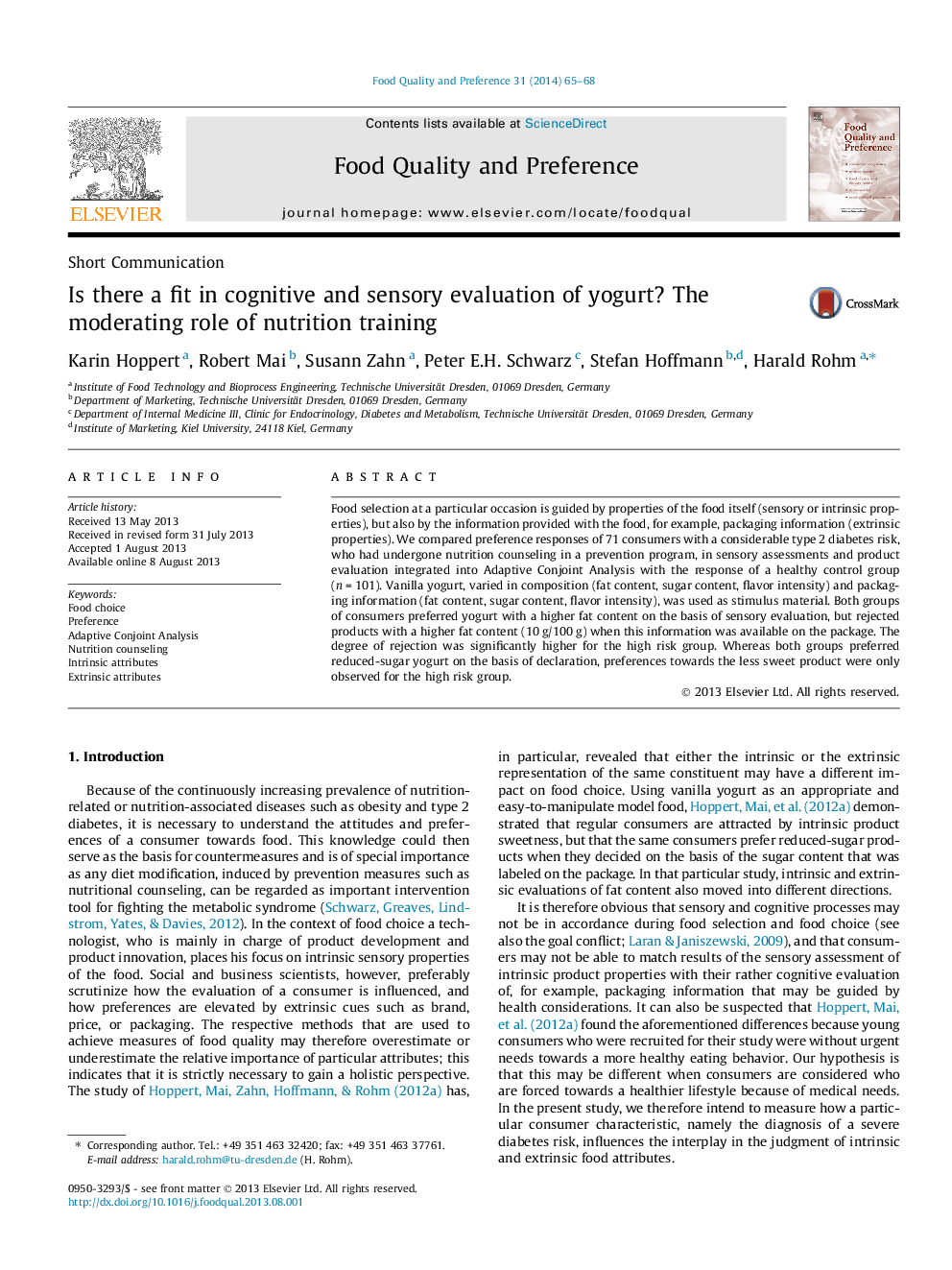| Article ID | Journal | Published Year | Pages | File Type |
|---|---|---|---|---|
| 4317303 | Food Quality and Preference | 2014 | 4 Pages |
•We perform Adaptive Conjoint Analysis (ACA) with control and diabetes risk consumers.•Sensory properties and packaging information are varied for ACA.•Yoghurt is modified in fat, sugar and flavour content (composition and labelling).•ACA utilities indicate a higher cognitive quota in selection for risk consumers.
Food selection at a particular occasion is guided by properties of the food itself (sensory or intrinsic properties), but also by the information provided with the food, for example, packaging information (extrinsic properties). We compared preference responses of 71 consumers with a considerable type 2 diabetes risk, who had undergone nutrition counseling in a prevention program, in sensory assessments and product evaluation integrated into Adaptive Conjoint Analysis with the response of a healthy control group (n = 101). Vanilla yogurt, varied in composition (fat content, sugar content, flavor intensity) and packaging information (fat content, sugar content, flavor intensity), was used as stimulus material. Both groups of consumers preferred yogurt with a higher fat content on the basis of sensory evaluation, but rejected products with a higher fat content (10 g/100 g) when this information was available on the package. The degree of rejection was significantly higher for the high risk group. Whereas both groups preferred reduced-sugar yogurt on the basis of declaration, preferences towards the less sweet product were only observed for the high risk group.
